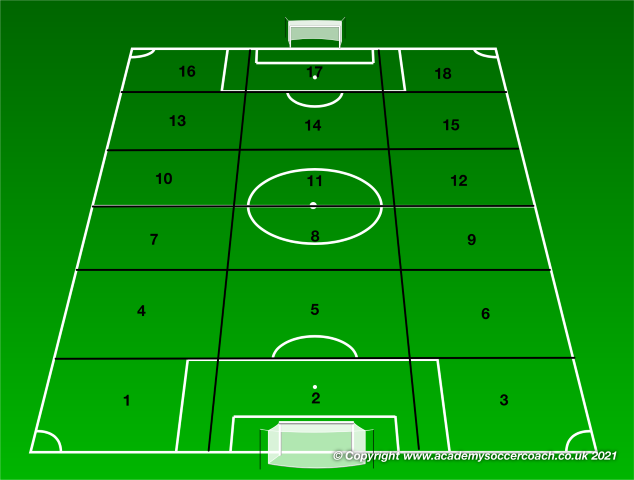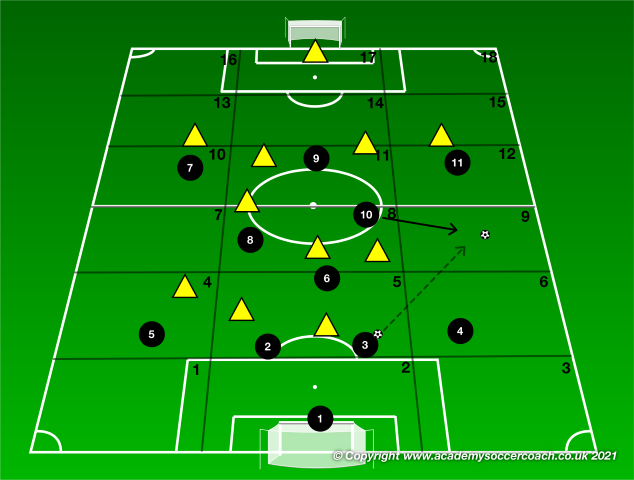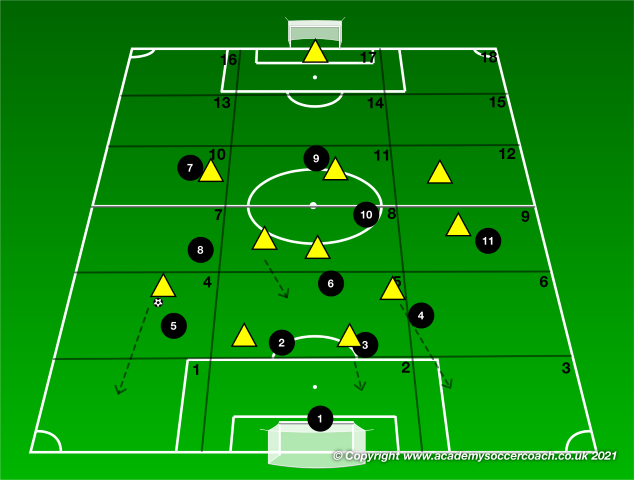By Soren Schamberg
During the heat of a game, it can be a challenge to communicate to your team and/or teammates where to move next. “Over There!”, “Up Front”, “This way!” fall short of being descriptive enough when fractions of a second matter and “Move up, move over, up more...right there...good” takes both the player and the coach out of other elements of the field that may be developing.
One piece of the remedy is to introduce players to the Numerical Zones of the Pitch to achieve a more succinct way of communicating between coach and player and between teammates.
So what are the zones of the pitch?

The zones of the pitch refer to the section if the pitch were divided into 18 pieces, 9 on each side. Starting from the defensive by-line and far left is area #1, then moving across the field and then up towards the attacking third ending at the top right of the field with #18. There are also more recent iterations of the zones and different areas the pitch is divided up into, but the 18 zone model is what we will briefly discuss today.
What these zone assignments do is allow everyone on the team, coaches and players alike, understand and communicate immediately which part of the pitch is being talked about.
For example, if the ball is transitioned from defense to offense by the #3 winning the ball, it would be more concise to hear “distribute to 9” then something like “look up, out wide”. If the whole team on the field knows where 9 is, the the #10 can start making a move to the space meeting the ball while the #3 distributes to the same space.

Alternatively, when defending, instructions as to which part of the field to occupy to defend or to recover can improve the defensive response to a breaking attack or to make sure the opponent is being challenged in all areas of the defensive third.

In this example, it can be explained that defenders should be aware of zone 1 and 6 as danger areas and the coach can discuss being outnumbered in 8 during the half time talk or post game discussion. Again, so everyone on the team knows which area is being discussed.
There are an endless number of variations, so you will have to play around with your own formations and ideas as to how a game may play out, but by having the whole team playing from the same sheet, and knowing the zones of the pitch, a more effective conversation and game plan can be had.
By Soren Schamberg


